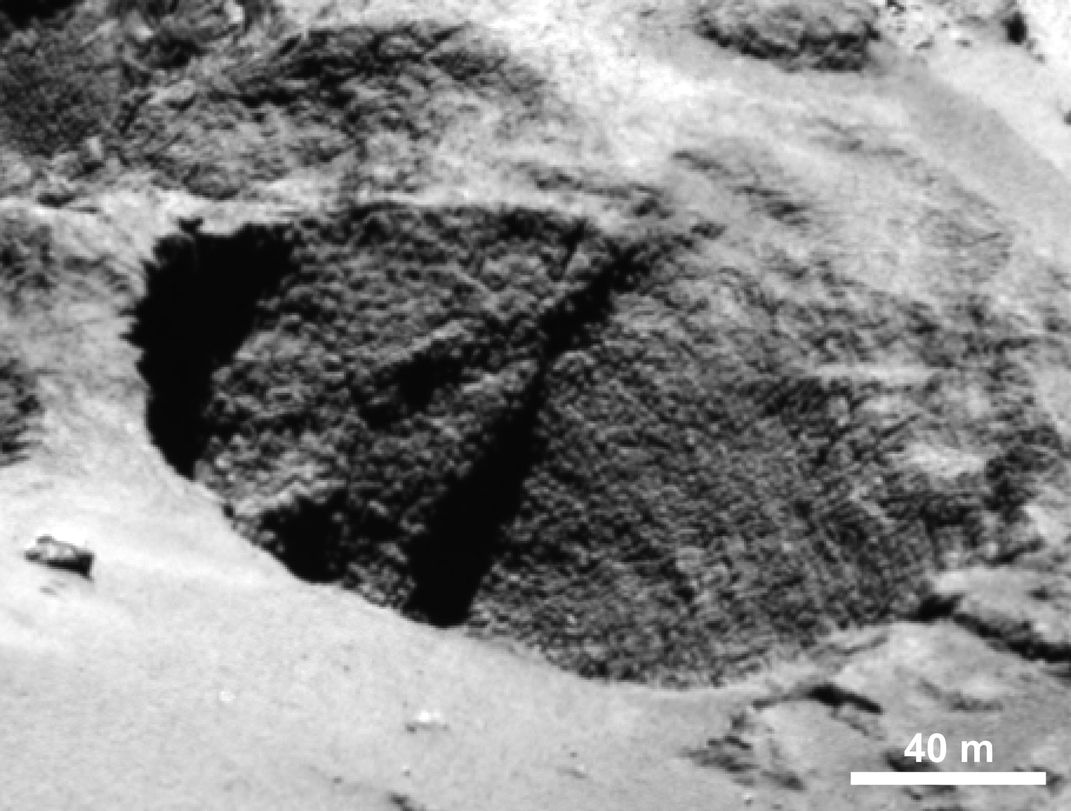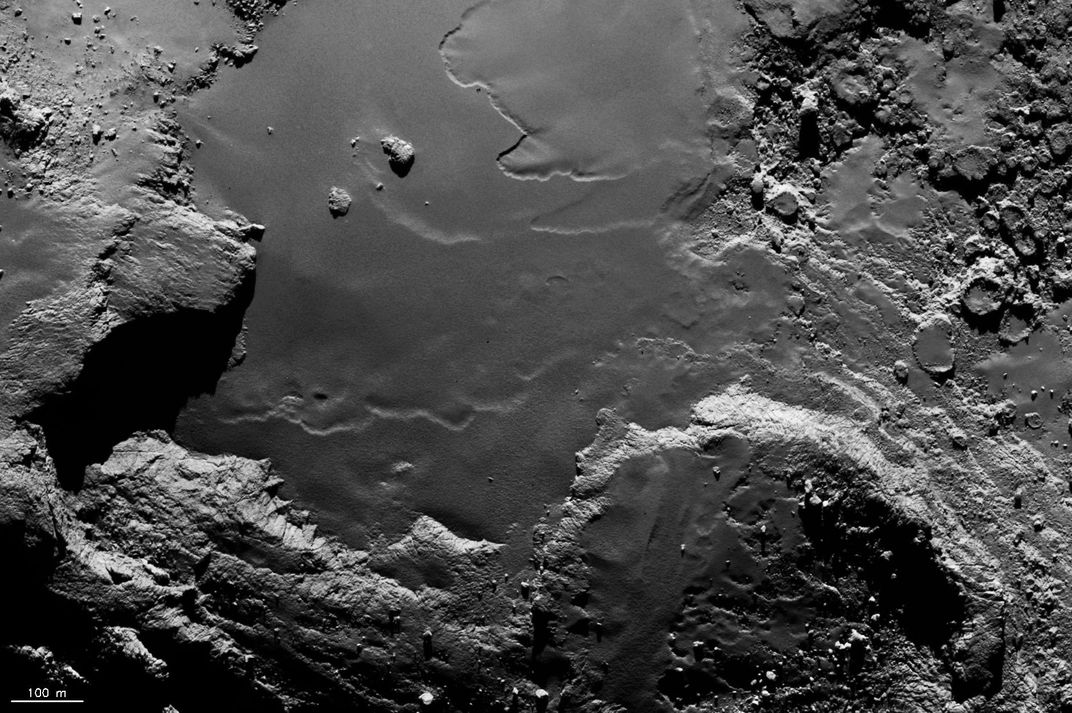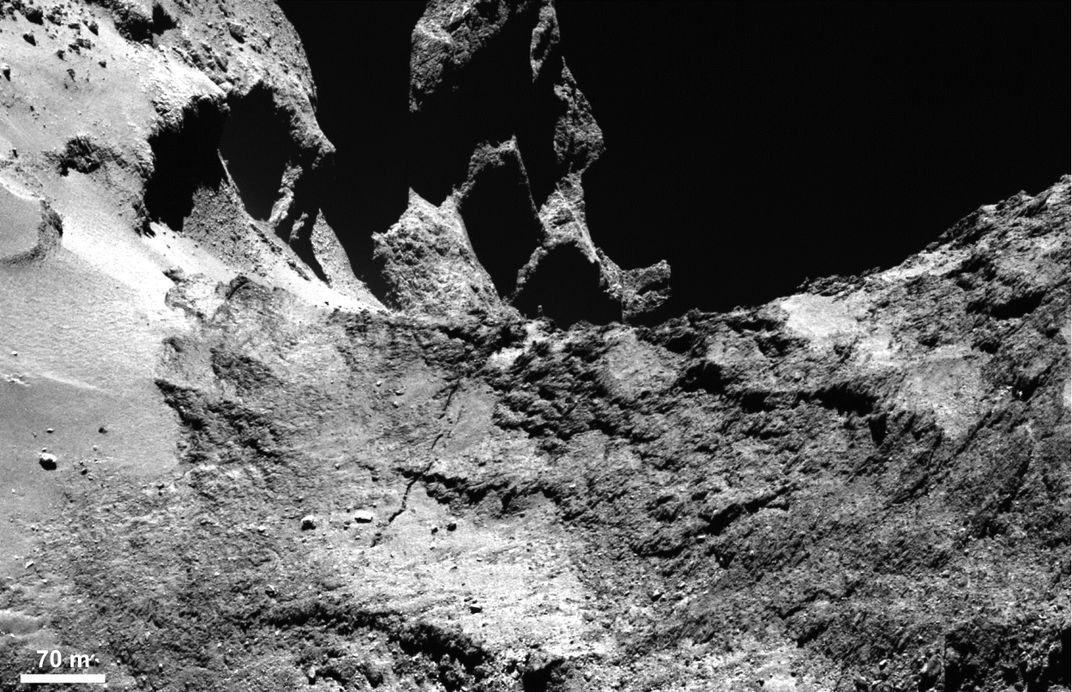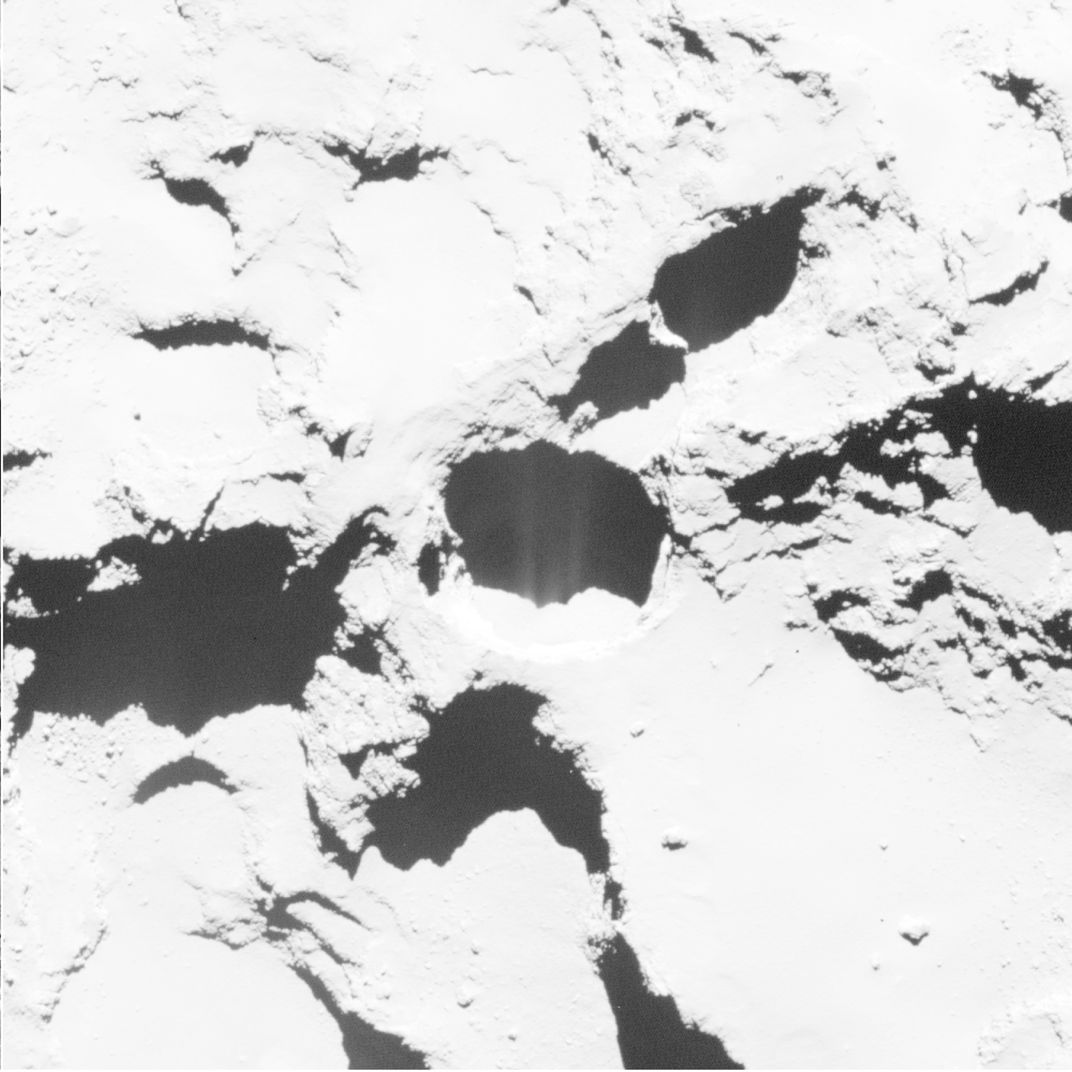Rosetta’s Comet Close-Ups Reveal Goosebumps And Very Little Ice
Rosetta is watching for changes as the double-lobed comet approaches the sun
/https://tf-cmsv2-smithsonianmag-media.s3.amazonaws.com/filer/b5/53/b553c3e6-4dde-4cc2-9daf-9b0f6a2c915e/comet4.jpg)
The little Philae lander is asleep, but that doesn’t mean that discoveries from the Rosetta mission are at an end. Already we know that comet 67P/Churyumov-Gerasimenko smells bad and sings. Now scientists have published a trove of findings from the Rosetta spacecraft’s 11 science instruments that give us a peak at the comet's "vital statistics," reports the European Space Agency.
High-resolution photos show that the double-lobed comet sports dust-covered regions marked with dune-like ripples, boulder-strewn areas, cliffs, pits, large depressions and jets of gases escaping the surface. Not much ice is visible on the surface, but researchers suspect the dust layer—as thick as several meters in some places—might insulate ice below. The findings were published in a special section in Science. The ESA’s statement notes:
Some very steep regions of the exposed cliff faces are textured on scales of roughly 3 m with features that have been nicknamed ‘goosebumps’. Their origin is yet to be explained, but their characteristic size may yield clues as to the processes at work when the comet formed.
The dunes are especially surprising, because the comet doesn’t have wind or enough gravity to form them. But the gas jets might take the place of wind and a weak intermolecular attraction called the Van der Waals force might hold the dust grains together, speculates Nicholas Thomas, of the University of Bern in Switzerland, in the New York Times. "“You can convince yourself you can make them move,” he says. “It’s plausible, at least at the moment.”
Another mystery still to be sussed out is why the comet has two lobes at all. The two parts seem very similar, but that doesn’t rule out the possibility that two smaller comets may have merged.
As the comet gets closer to the sun, Rosetta will be able to watch as it grows a coma—the tail of gas and dust that makes comets distinctive. As the comet changes, interactions with the Sun’s ultraviolet light will help it develop an ionosphere and magnetosphere as well.
There are more images of the comet—as it appeared mid-December, at least—at ESA’s website. The photos didn’t reveal the Philae lander’s location. The dish-washer sized probe would be just "a few pixels in a four-million-pixel image," writes Kenneth Chang for the Times. Rosetta might be able to spot Philae if it looks harder, though. While that would help researchers know if Philae might wake up when sunlight hits its solar panels, it would mean changing some of the scientific goals of the mission.



